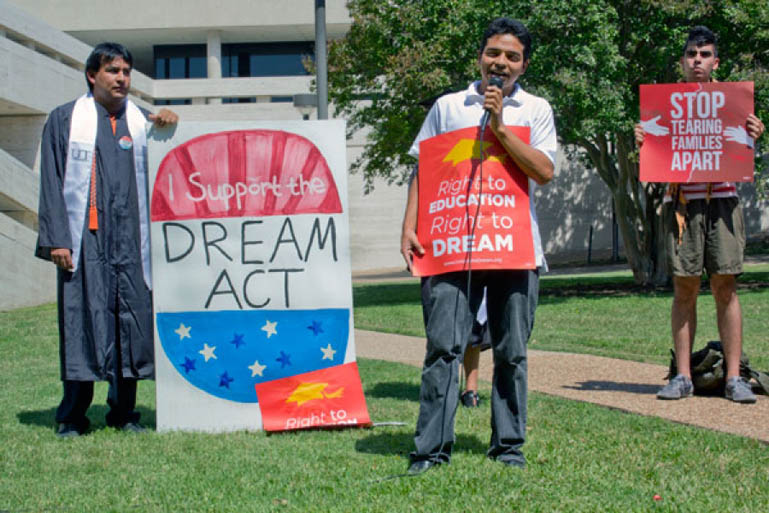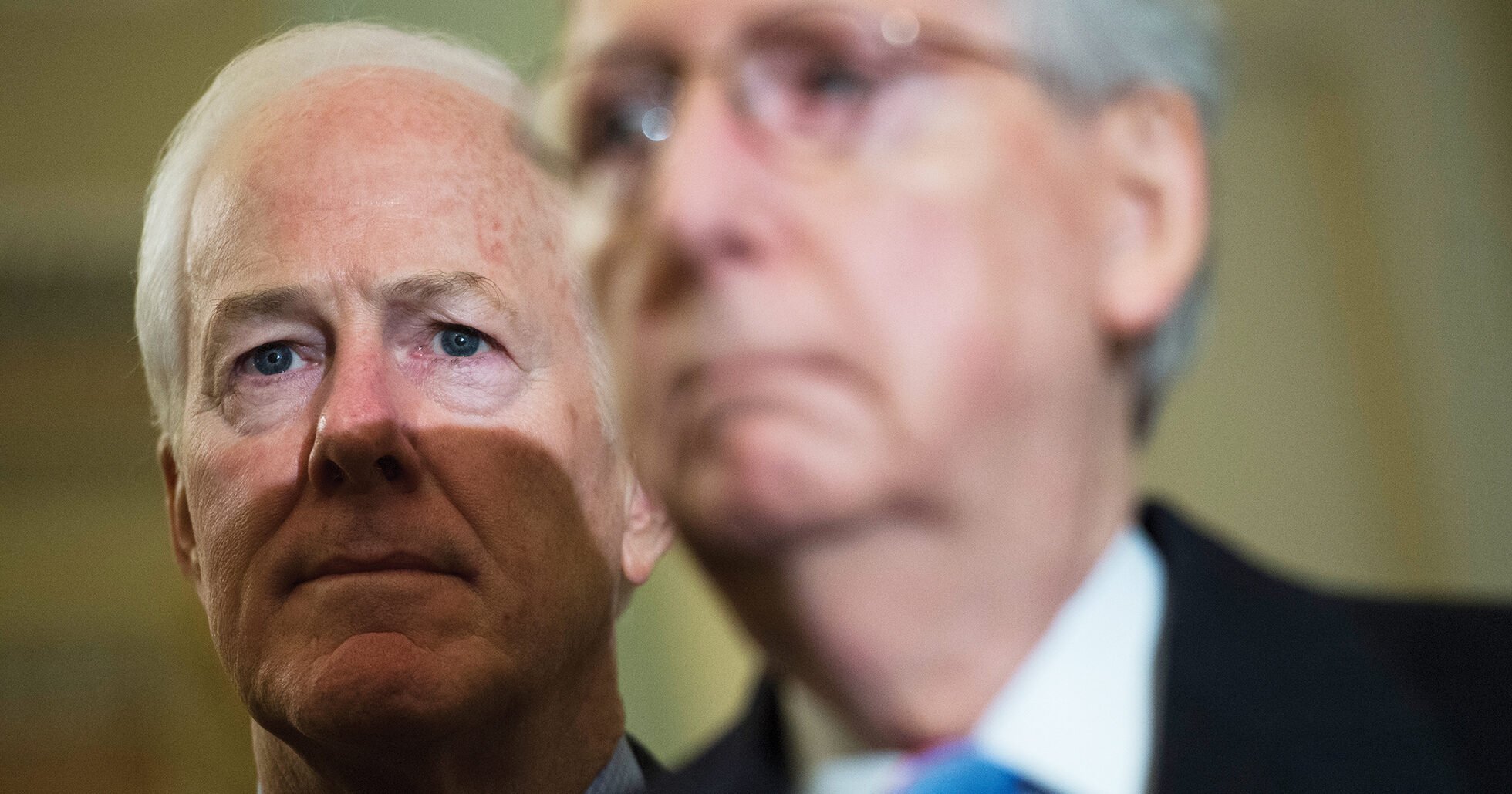
What to Expect in Obama’s Executive Action on Immigration

Above: Daniel Candelaria and Loren Campos at a UT-Austin rally to pass the Dream Act, June 2012.
President Obama’s plans for the long-awaited executive action on immigration will finally be unveiled tomorrow at 8 p.m. ET/7 p.m. CT in a televised announcement. This will be followed by a rally at a high school in Las Vegas on Friday with Senate Majority Leader Harry Reid where undoubtedly more details of the president’s plan will be revealed.
I asked longtime immigration attorney Dan Kowalski with The Fowler Law Firm in Austin to give Observer readers a broader idea of what Obama’s executive action might contain and how it might impact the estimated 1.7 million undocumented immigrants living in Texas. What’s certain is that whatever plan Obama unveils Thursday evening it will change millions of lives for the better.
Observer: How many people do you think the executive action will impact?
Kowalski: Anywhere from 2 million to 6 million people, but the details are a closely held secret so we won’t really know for sure until tomorrow night, although I think tomorrow night could just be a teaser. I read that Congress will be briefed tomorrow so we’ll see about that. It could be that more details will also be revealed on Friday in Las Vegas.
Observer: So which categories of immigrants do you think will be covered by the executive action?
Kowalski: I think the parents of U.S. citizen kids and maybe some parents of DACA kids (Deferred Action for Childhood Arrivals) and they may raise the DACA age and in addition there may be something for agriculture and there may be something for high tech workers. There’s rumors about that. But I think the biggest group to benefit will be the millions of parents of U.S. citizen children.
Observer: That’s a pretty large sum of people isn’t it?
Kowalski: It could be, but the limiting factors will be: No. 1, is there a time qualification? Meaning you have to have been here a certain number of years. And No. 2, what are the other eligibility requirements such as criminal record and what’s the filing fee going to be?
Observer: Typically when these types of executive actions have happened in the past there are quite a few caveats and restrictions to qualifying, correct?
Kowalski: It depends on how tightly they make it. If they make it really tight not many people will qualify. We’ll know a lot more when they release the application forms. But I think the application period won’t probably begin until two to six months down the road. USCIS (U.S. Citizenship and Immigration Services) can’t ramp up that fast. They need to hire staff and create procedures and forms.
Observer: So it’s not something that will begin on Jan. 1?
Kowalski: I think it’s going to be March, April at the earliest.
Observer: Will there be funding there to support the huge number of people who will be filing?
Kowalski: Well, the thing about USCIS is that everything is fee-funded. They don’t get appropriations, so everything that USCIS does has to be funded through user fees. It will be a self-funding program no matter what.
Observer: What other groups of people should be included but won’t be?
Kowalski: I would like to see it be as broad as possible but that would require legislation. This action is more of a stopgap and what really needs to happen down the road is something from Congress that makes the visa rules broader and simpler to allow more people to immigrate.
Observer: How long do you think it will take people to go through the process with their paperwork? Immigration courts are already extremely backed up.
Kowalski: Well, this won’t have anything to do with the immigration courts. It will be an administrative process similar to the way that DACA is operating now. This will be much bigger than DACA of course, maybe 10 times as many people.
Observer: Will people who qualify under the executive action get legal residency permits?
Kowalski: No, they won’t get legal status, just a work permit. It will be like DACA—call it DACA-plus. I think they will probably get a work permit for two years, like DACA.
Observer: Anything else you think is important for people to know about this impending executive action on immigration?
Kowalski: A lot of people inside government and Congress and in the media are saying this action will spur Congress into finally doing something about immigration reform legislatively. I have the opposite view. There are plenty of people in Congress and in the administration that like the system broken. Fence-builders, jail-builders and the drone people and the enforcement people make a huge profit from the system as it is now. It’s good to be broken because it’s more work for them. If everything works and there are lots of visas then there’s nothing for them to enforce. Still, it’s going to be exciting to see what Obama announces tomorrow evening. Stay tuned.


